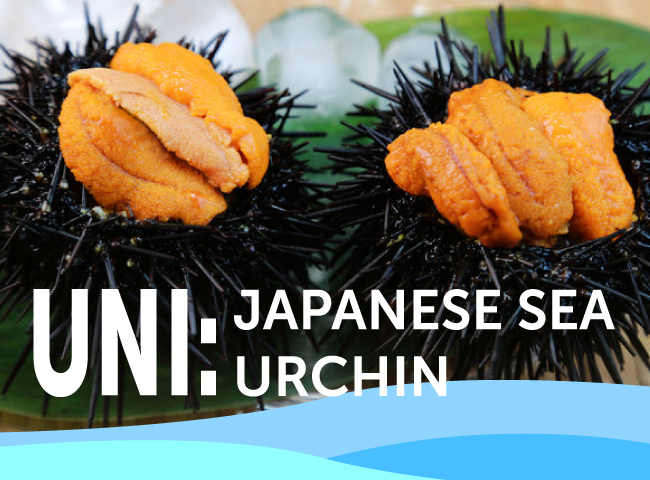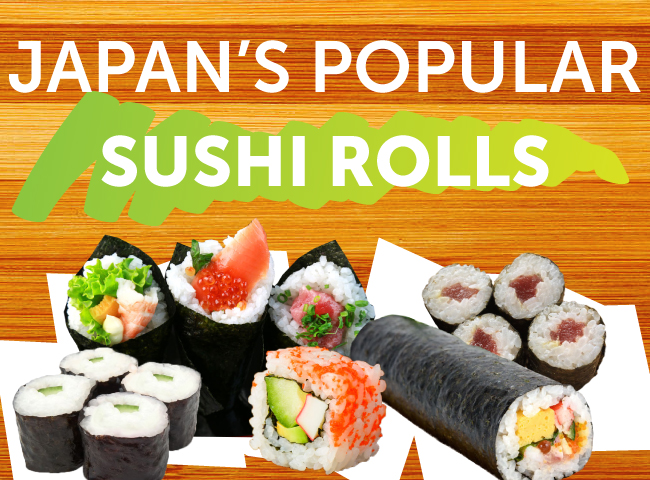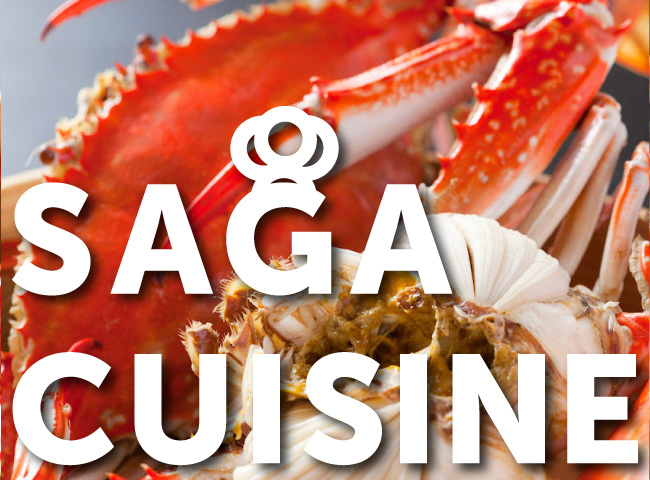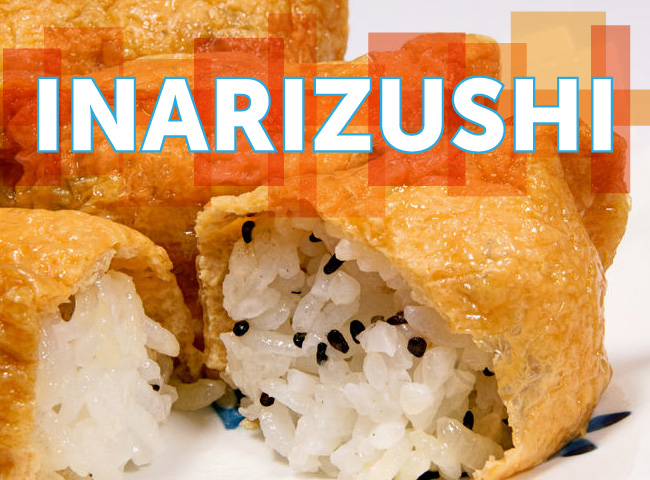Types of Sashimi in Japan: The Essential Guide
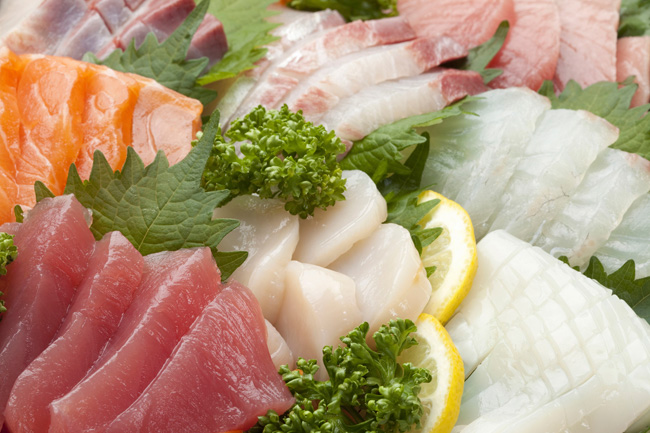
Sashimi, or eating raw thinly sliced food, is a traditional form of dining in Japan that goes back thousands of years. The practice of eating raw fish first arrived to Japan via China around 500 BCE, and since then it’s become an integral part of the Japanese diet. The name “sashimi” literally means “cut body” in Japanese, but it uses the kanji character for “pierce” rather than “cut” as the kanji for “cut” was considered an auspicious term reserved for samurai.
While sashimi can refer to almost any kind of meat—including raw beef, chicken, and even horse—fish and seafood are the most popular items to be eaten this way. Sashimi is made by cutting the ingredients into bite-sized rectangular shapes, thin diagonal slices, small firm squares, or thin julienned slivers.
Sashimi can be eaten as a standalone treat with some beer or sake, or as part of a larger course meal.
How to Eat Sashimi
Sashimi is typically served on a platter or on ice with some sort of garnish, including shredded daikon radish, shiso perilla herb, kogiku chrysanthemum flower, benitade (red water pepper sprouts), and sometimes even accompanied by the head and tails of the fish that the sashimi was cut from, or the shells that the shellfish was taken from. For condiments, soy sauce and grated wasabi horseradish are usually provided, and sometimes ponzu, a citrus-y soy sauce, may also be offered.
When eating sashimi, be sure to use chopsticks, and take care not overload each piece with condiments, which overpowers the flavor of the fish.
Popular Types of Sashimi
Katsuo (Bonito / Skipjack Tuna)
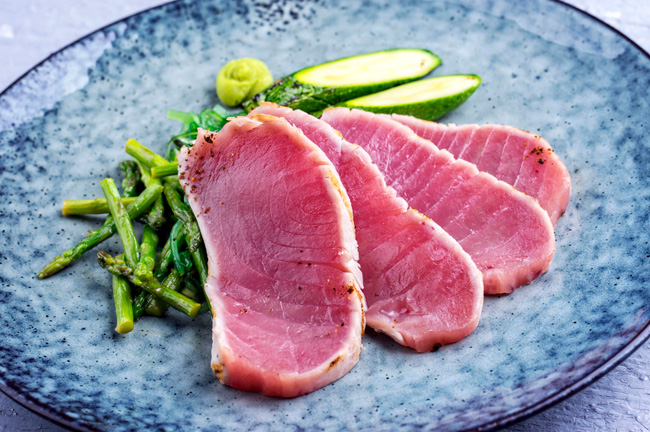
Katsuo is one of the most popular kinds of tuna in Japan, and one of the most popular ways to eat it is “katsu no tataki” style, lightly seared on the outside and raw the inside, served thinly sliced with ponzu citrus and garlic or ginger.
Sake (Salmon)
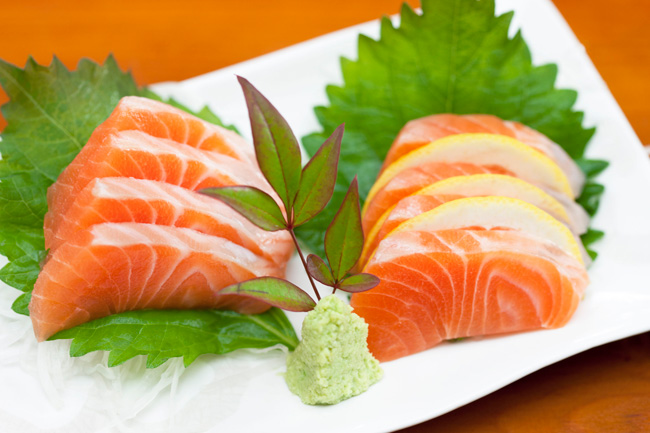
Salmon is easily recognized for its bright orange color. It ranges from lean to fattier pieces, with salmon belly coming at a premium price due to its extra fattiness.
Maguro (Bluefin Tuna)
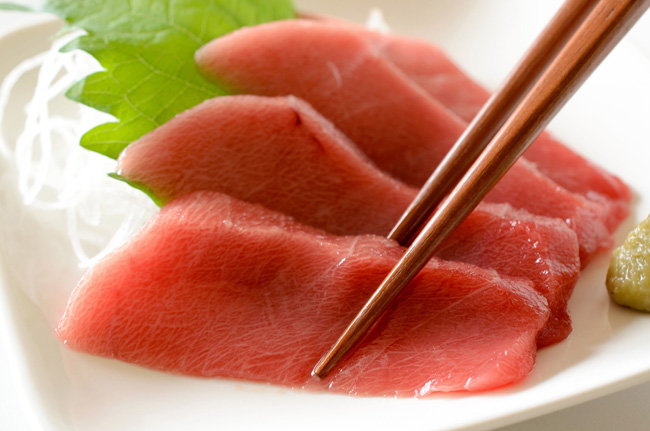
Maguro is one of the most highly prized fish around the world. It’s popular to serve bluefin tuna as a triumvirate of akami (lean tuna), chutoro (medium fatty tuna), and otoro (fatty tuna).
Ahi (Yellowfin & Bigeye Tuna)
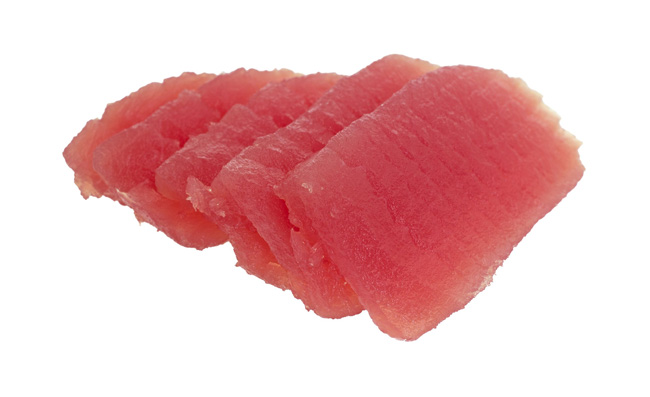
Ahi is the name for two types of tuna: yellowfin tuna, which has a mild flavor and a firm texture making it perfect for sashimi, and bigeye, which has a higher fat content and buttery flavor.
Engawa (Halibut)
A type of flounder fish, halibut makes for a very good thin-cut sushi. Engawa is the portion of sashimi cut from along the flounder's fin. The texture is a bit tough, but there's also a fatty portion that's high in collagen.
Hotate (Scallops)

Scallops are incredibly sweet and creamy when served fresh out of their shell for sashimi, which gives them a different taste and texture compared to scallops used for sushi.
Ebi (Sweet Shrimp / Prawns)
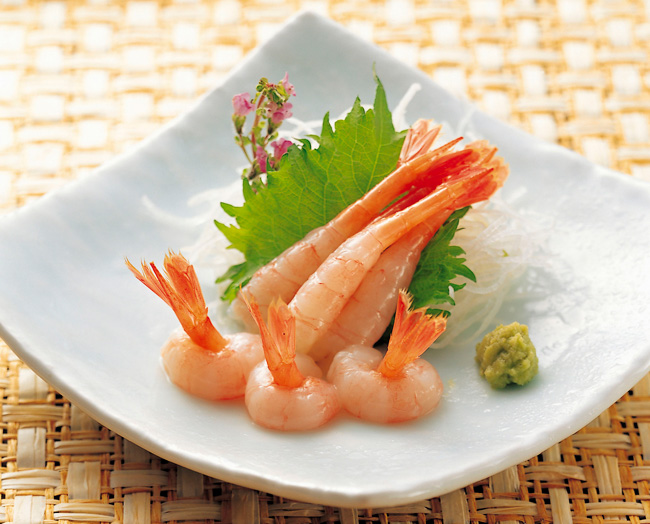
There are several varieties of shrimp and prawns popular for sashimi. Sweet shrimp includes both the smaller amaebi and the larger botan ebi, while aka ebi (red shrimp) is high in fat and kuruma ebi (Japanese tiger prawns) are considered a huge delicacy.
Hokkigai, Akagai, Tsubugai, Mirugai (Surf Clam, Red Clam, Whelk, Geoduck Clam)

Hokkigai are a popular clam used for sashimi and have a meaty texture and sweet flavor, while akagai clams have a mild, subtle taste. Tsubugai are known for their sweet flavor and slightly crunchy texture, and mirugai are also a bit crunchy but have a briny ocean aroma accentuated by a faintly sweet flavor.
Ika (Squid)

Squid becomes thin and flat when cut into pieces, so it’s usually julienned into thin slivers to make the presentation more attractive for sashimi.
Tako (Octopus)

Octopus is typically served boiled as it’s quite chewy, or even rubbery when not well prepared. In order to be served raw for sashimi, the octopus must be very thinly sliced in order to be easily chewed and to draw out its subtly sweet aroma.
Saba (Japanese Mackerel)
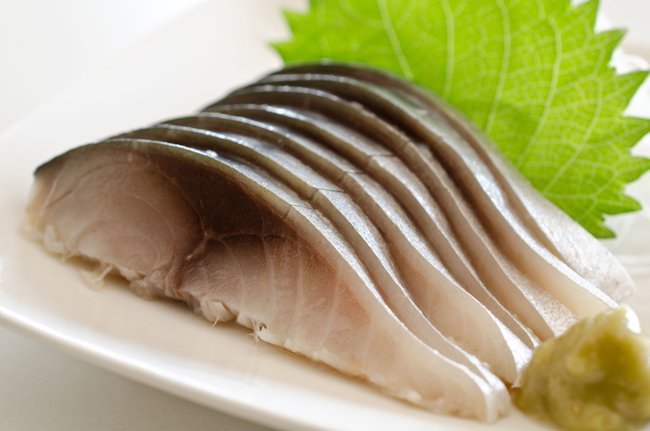
Saba is usually served grilled, but when in season it’s a delicious sashimi option for those who enjoy bolder tasting fish. Because of its boldly fishy flavor and oily taste, saba goes well with the sharpness of diced green onions and grated ginger.
Aji (Horse Mackerel)

Aji is a popular and inexpensive fish that can be found in the waters around Japan, Korean, and China.
Hamachi / Kanpachi (Yellowtail)
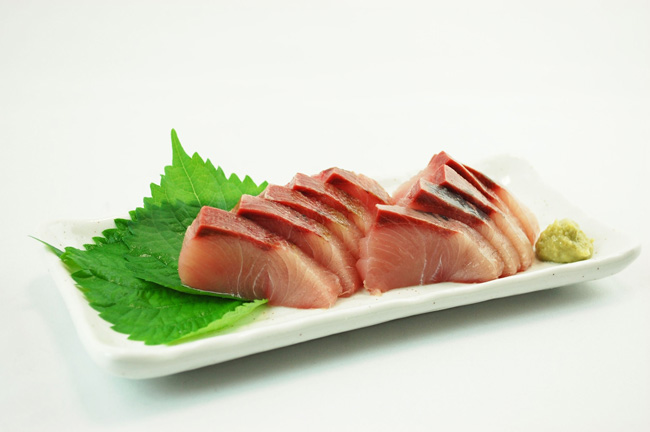
Yellowtail is a leaner, milder and slightly creamy tasting fish that comes into season during the early summer. The color is a very light pinkish-white that’s almost translucent.
Tai/ Kamachi/ Hamadai (Red Snapper/ Sea Bream)

Tai is the name for several varieties of red snapper. It’s one of the most highly prized fish in Japan for its excellent flavor, texture, and color. Because of this, it’s considered a symbol of celebration and good luck.
Sanma (Pacific Saury/ Mackerel)
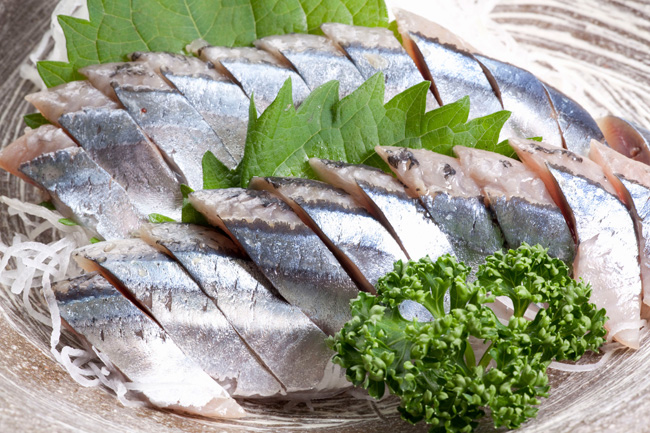
Sanma is a type of red fish that’s usually enjoyed with grated ginger and thinly sliced myoga or green onion, but for sashimi it’s typically served with a small amount of soy sauce and wasabi.
Suzuki (Sea Bass)
Suzuki is a mild-tasting, white fleshed fish with a delicious flavor. The meat on the back of the fish is firm and delicious, while the meat from the belly is more fatty and soft.
Now That You’re across How to Eat Sashimi & Different Types of Sashimi, It’s Time to Get Tasting!
If you’re already a fan of sushi, then you can’t miss trying out some amazingly fresh sashimi on your next visit to Japan. Check out Gurunavi’s list of sushi restaurants for the best places to enjoy sashimi in Japan. Itadakimasu!


